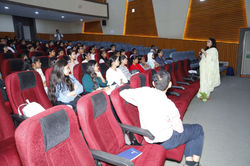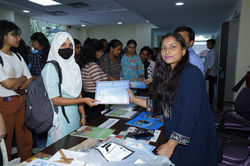
International Day of Clean Air for Blue Skies
The International Day of Clean Air for blue skies takes place on 7 September 2024.
Held under the theme "Invest in #CleanAirNow", it highlights the urgent need for increased investment, stronger policies, and shared responsibility to combat air pollution and its severe impacts on health, economies, and the climate.
International Day of Clean Air for blue skies
The fifth International Day of Clean Air for blue skies takes place on 7 September 2024. This day highlights the urgent need to address the evolving threat of air pollution and its severe impact on health, economies, and community resilience.
Air pollution has long contributed to death and disease, undermining economic prospects and community well-being. Many sources of air pollution, such as the burning of fossil fuels and biomass, also contribute to greenhouse gas emissions, causing our planet to warm.
Like climate change, air pollution affects everyone but impacts pregnant people, babies and children, older people, those living in poverty, and historically marginalized communities.
The enormity and immediacy of these challenges cannot be ignored.
Held under the theme "Invest in #CleanAirNow", this year's observance emphasizes the urgent need for stronger partnerships, increased investment, and shared responsibility to combat air pollution. It is the second leading risk factor for death, causing around 8.1 million premature deaths annually from conditions such as stroke, heart disease, lung cancer, and acute respiratory infections.
#CABS2024 #CleanAirNow #YouthInAction
Clean Air for Blue Skies Event
On the International Day of Clean Air for Blue Skies, Vital Strategies joined the National Centre for Disease Control in India under the USAID supported hashtag#CleanerAirAndBetterHealth project and Health Volunteers to host a workshop to engage and empower young leaders to reduce air pollution.
The project aims to strengthen air pollution mitigation and reduce exposure through better air quality management.
Thanks to the Council on Energy, Environment and Water (CEEW) along with
Thanks to Council on Energy, Environment and Water (CEEW), Soumitri Das, Sonia D. Henam and Anuradha Jain for their involvement in the workshop
 |  |  |  |  |
|---|---|---|---|---|
 |  |  |  |  |
 |  |  |  |  |
 |  |  |  |  |
 |  |  |  |  |
 |  |
Social Media
Air Pollution

Air pollution is the greatest environmental threat to public health globally and accounts for an estimated 7 million premature deaths every year. Air pollution and climate change are closely linked as all major pollutants have an impact on the climate and most share common sources with greenhouse gases. Improving our air quality will bring health, development, and environmental benefits.
Air pollution is a major global health crisis and causes one in nine deaths worldwide. Exposure to PM2.5 reduced average global life expectancy by approximately one year in 2019.
The deadliest illnesses linked to PM2.5 air pollution are stroke, heart disease, lung disease, lower respiratory diseases (such as pneumonia), and cancer. High levels of fine particles also contribute to other illnesses, like diabetes, can hinder cognitive development in children and also cause mental health problems.
Objectives
Raise Awareness
Raise awareness about the adverse health effects of air pollution, with a focus on the young population
Actionable Solutions
Mobilize Health Volunteers to participate in air pollution awareness campaigns, engaging youth in actions for cleaner air and environmental sustainability.
Build Partnerships
Partner with organizations to enhance youth awareness and action on air pollution by utilizing available resources and expertise to drive impactful change.
Outcomes of the campaign
Enhances Public Health
Address the health impacts of air pollution on youth by promoting awareness and preventive actions to reduce exposure, thereby improving overall community health outcomes.
Promotes Sustainable Development
Addressing the health impacts of air pollution among youth aligns with sustainable development principles, fostering resilience, environmental equity, and well-being for present and future generations.
Empowers Communities
Engaging Health Volunteers in addressing air pollution empowers communities to advocate for cleaner air and healthier environments, promoting the well-being of youth and future generations.
What do you get as a Volunteer?
Participating in Health Volunteers campaigns offers an experience equivalent to an internship or fellowship, providing you with invaluable lifelong experience and learning opportunities.
Meaningful Impact
By joining the program, volunteers will have the opportunity to make a tangible difference in their communities and contribute to global efforts towards Climate change.
Skill Development
Engaging in various activities within the program will allow volunteers to enhance a diverse set of skills, including communication, teamwork, project management, and Climate change awareness.
Networking Opportunities
Volunteers will have the chance to connect with like-minded individuals, experts in the field, and community leaders, expanding their professional network and fostering collaborations for future endeavors.
Recognition and Appreciation
Volunteers' efforts will be recognized and appreciated by the community, stakeholders, and program organizers, providing a sense of fulfillment and validation for their contributions.
Rewards
Upon completion of the program, volunteers will receive a certificate of participation, acknowledging their dedication and commitment to promoting environmental health and sustainability.
Opportunities for Leadership
The program offers avenues for volunteers to take on leadership roles, guiding and inspiring others in their environmental advocacy journey, thereby fostering a culture of leadership and empowerment.





